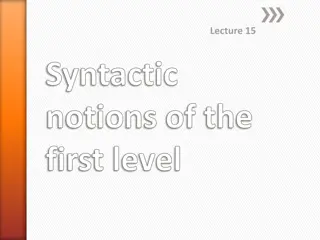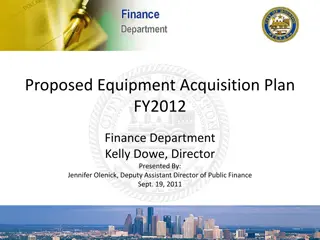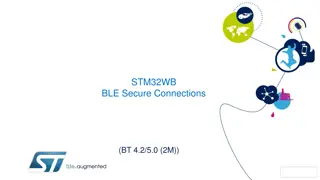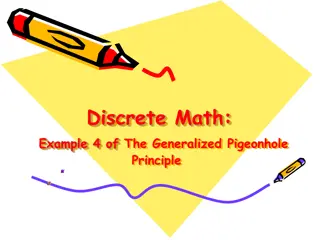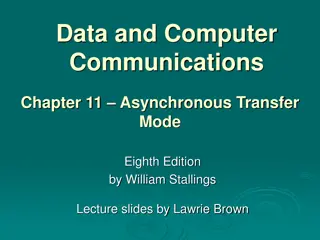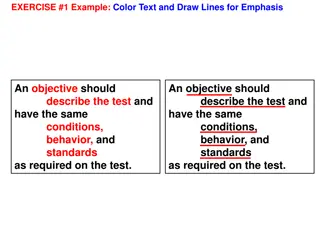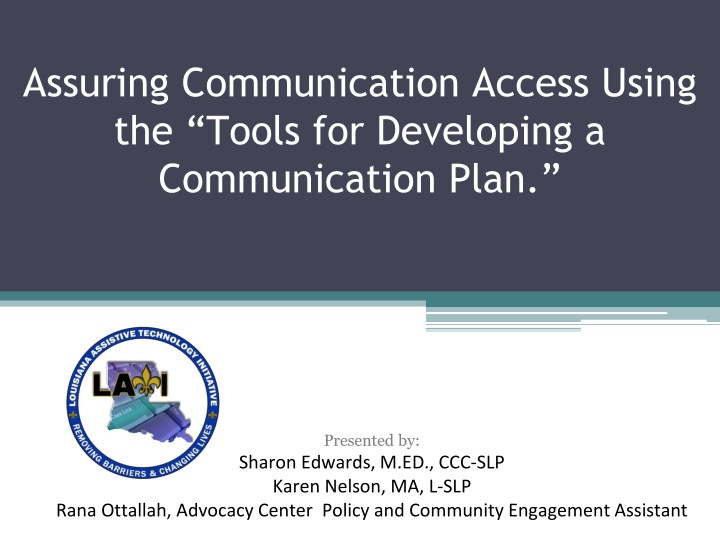
Developing a Communication Plan for Students with Communication Barriers
Learn about the importance of communication plans for students facing communication barriers in education settings. Understand why these plans are necessary, who should have them, and the legal requirements to ensure compliance and equitable access to education.
Download Presentation

Please find below an Image/Link to download the presentation.
The content on the website is provided AS IS for your information and personal use only. It may not be sold, licensed, or shared on other websites without obtaining consent from the author. If you encounter any issues during the download, it is possible that the publisher has removed the file from their server.
You are allowed to download the files provided on this website for personal or commercial use, subject to the condition that they are used lawfully. All files are the property of their respective owners.
The content on the website is provided AS IS for your information and personal use only. It may not be sold, licensed, or shared on other websites without obtaining consent from the author.
E N D
Presentation Transcript
Assuring Communication Access Using the Tools for Developing a Communication Plan. Presented by: Sharon Edwards, M.ED., CCC-SLP Karen Nelson, MA, L-SLP Rana Ottallah, Advocacy Center Policy and Community Engagement Assistant
What is a Communication Plan? A Communication Plan is a method for assuring the needs of students who are experiencing communication barriers and are receiving special education or 504 services are met. The Tool for Developing Communication Plans is a document/form that is strongly recommended to be used to help guide teams in developing an effective plan. Findings and needs derived from this collaborative process should be reflected in the IEP/IAP communication box and as communication goals.
Why is a Communication Plan Needed? Teachers can t educate students they can t effectively communicate with, and since communication is a two way street teachers, schools staff, parents and peers need to understand the communication modality and language use by students with unique communication needs. Once IEP/IAP teams have a clear picture of the communication needs of a student, they can set communication goals and utilize auxiliary supports and services to ensure the student has full and equal access to academics and extracurricular activities other students enjoy and benefit from.
Who Should Have a Communication Plan? The new tool should be used for any student experiencing communication barriers as a result of his/her disability, including those who: are classified as Deaf/Hard of Hearing or Deaf/Blind (refer to Act 250), or have limited or no verbal skills, or have other significant impairments in the areas of receptive and/or expressive language, including but not limited to impairments in the areas of apraxia, articulation/phonology, fluency, pragmatics, or auditory processing.
Laws A Communication Plan is needed to remain in compliance with: Individuals with Disabilities Education Act (IDEA 2004) American with Disabilities Education Act (ADA) Louisiana Act 250 (2015) Louisiana Deaf Child s Bill of Rights
6 IDEA 2004 The IEP team must: Consider the communication needs of the child, and in the case of a child who is deaf or hard of hearing, consider the child s language and communication needs, opportunities for direct communication with peers and professional personnel in the child s language and communication mode, academic level, and full range of needs, including opportunities for direct instructions in the child s language and communication mode. 20 U.S.C. 1414(d)(3)(B)(iv); 34 C.F.R. 300.324(a)(2)(iv)
ADA and Effective Communication https://www.ada.gov/effective-comm.htm The purpose of the effective communication rules is to ensure that the person with a vision, hearing, or speech disability can communicate with, receive information from, and convey information to, the covered entity. Covered entities must provide auxiliary aids and services when needed to communicate effectively with people who have communication disabilities. The key to communicating effectively is to consider the nature, length, complexity, and context of the communication and the person s normal method(s) of communication. The rules apply to communicating with the person who is receiving the covered entity s goods or services as well as with that person s parent, spouse, or companion in appropriate circumstances
8 Act 250: Deaf Child Bill of Rights Act 250 of 2015 states that public schools shall include a Communication Plan in the IEP of every student with an Exceptionality who is deaf, hard of hearing, or deaf-blind. Where appropriate, public schools shall include a Communication plan in the IAP for a student who is deaf, hard of hearing, or deaf-blind.
Tools for Developing Communication Plans: Students with Unique Needs Factors to Consider When Planning for Communication and Language Supports: Language and Communication Needs Opportunities for Communication Classroom Considerations Action Plan: Communication and Language Supports Appendices: Frequently Used Terms Resources for Families
Action Plan How the student will communicate with others and how others will communicate with the student. Include the following (but not limited to): What is the mode of communication? What AT is needed? How will they communicate across environments? How will others support student in using their mode? What training is needed? How will you measure progress?
Student Example: Jennifer Student: Jennifer Grade: 5th Age: 11 Disability Classification: Intellectual Disability (significant) with a secondary exceptionality of Orthopedic Impairment (diagnosed with cerebral palsy) Primary Language: English Jennifer has a friendly, outgoing personality and enjoys interaction with both peers and adults. She seems to understand most of what others ask of her or tell her. She communicates via vocalizations, facial expressions, reaching/ pointing, use of printed symbols, and an 8 location static display communication device with levels. She accesses the device through pointing with her right pointer finger. She is not able to change her own overlays on her device and sometimes will get upset because what she wants to say is not on the device. She loves to interact with others and answer questions in class but does not use her device outside the classroom or in her home environments. Jennifer uses pictures and picture symbols (Symbolstix) to respond academically, indicate choices, and express wants and needs. She typically responds to questions by combining 1-2 symbols. She requires extended time to communicate responses on all tasks. Jennifer is beginning to use a touch screen to access the computer for games and some academic sites.
Student Example: Johnny Grade: Kindergarten Age: 5 Disability Classification: Deaf/ Hard of Hearing Primary Language: English (Oral) Johnny was born deaf in both ears and had cochlear implant surgery as a baby. His current hearing age is comparable to a 4 year old and his language age is comparable to a 2 year old. Johnny s parents would like for him to use oral language as his mode of communication. He has been in an inclusive preschool classroom for two years and does not receive any therapy outside of what is provided through his IEP. He has a hard time hearing the teacher when there is a lot of background noise. Johnny enjoys playing with other kids his age but is very shy when he first meets new people. He communicates with facial expressions, some ASL signs, gestures and spoken words. However, he does not speak often to personnel and peers. He will only respond and vary rarely initiates conversation.
Communication Plan in SER Teams are strongly urged to use the Communication Plan and/or AT Consideration Checklist to assist in developing a communication plan.
IEP Documentation This information should be included in the students IAP or IEP under the communication needs section and when appropriate, AT devices/services and goals Communication Plan should be described here Indicate any AT devices and services that student will need to effectively communicate (no - high tech)
Our Goals All LA students with disabilities who have unique communication needs are provided the supports they need to communicate (both expressively and receptively) to facilitate their engagement in the essentials of literacy. Students with unique communication needs: Will enter K with appropriate communication system in place Have individual plans that outline specific supports and services necessary to address their communication needs Will receive communication supports/services outlined in the plan Will have access to educators and support personnel who are qualified and understand how to meet their needs
Communication Work Group Louisiana Department of Education established a communication work group from different stake holders and experts in different communication needs to revise the existing plan and expand the plan to include ALL students with communication needs Communication work group included: Deaf Blind Project Louisiana School for the Deaf Deaf Adults Parent Advocates Speech Language Therapists Autism Experts Occupational therapists LSU Communication Disorder Departments Educational Interpreters Louisiana Assistive Technology Initiative LATI School districts Teachers for the Deaf Special Education Teachers DOE staff
Resources Presentation Handouts: https://goo.gl/3PdsbZ Communication Plan and Resources www.louisianabelieves.com/resources/library/acade mics For Further Assistance Contact: LATI Center at www.laticenters.org LDOE at specialeducation@la.gov Rana Ottallah, Advocacy Center, rottallah@advocacyla.org Karen Nelson, MA., L-SLP, knelson@ebrschools.org
References: https://www.louisianabelieves.com/docs/default-source/academics/tools- for-developing-communication-plans.pdf?sfvrsn=12 https://www.louisianabelieves.com/docs/default-source/academics/act- 250-(2015)-implementation-final.pdf?sfvrsn=8 http://www.louisianabelieves.com/docs/default-source/teacher-leader- summit/a-014-special-education-communicatin-plans-for-unique- needs.pdf?sfvrsn=2 https://www2.ed.gov/about/offices/list/ocr/letters/colleague-effective- communication-201411.pdf https://www2.ed.gov/about/offices/list/ocr/docs/dcl-faqs-effective- communication-201411.pdf








